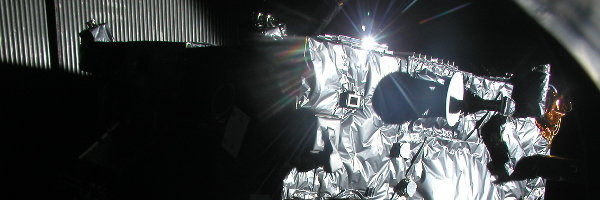
MIRO - Microwave Instrument for the Rosetta Orbiter
The MIRO (Microwave Instrument for the Rosetta Orbiter) consists of a 30-cm diameter telescope and two heterodyne receivers operating around 190 GHz and 562 GHz. MIRO will measure cometary gases (e.g. water vapour, carbon monoxide, ammonia and methanol) and water isotopes from the nucleus of the comet 67P/Churyumov–Gerasimenko. MIRO will determine the surface and subsurface temperatures, the gas production rates and relative abundances, the velocity of each specie, and monitor these quantities as a function of location and heliocentric distance of the Rosetta mission target.

MIRO is a heterodye spectrometer, meaning that the received radiation from the comet in the two bands (190 and 562 GHz) is down-converted to a lower intermediate frequency range (IF). The IF signals are feeded to continuum channels and a real-time spectrometer (a Chirp Transform Spectrometer) that calculates the spectra of the received signals and averages them about 50000 times per second. From the intensities and Doppler shifts of the spectra the physical information (e.g. the abundances of the cometary gases) about the comet is derived.
While the spectrometer provides a highly resolved spectra of gases, the continuum channels measure the microwave brightness temperatures of the cometary surface and gradients.
The gases are of interest for quantifying the intrinsic abundances of volatiles in the nucleus. The data of the surface and near surface temperatures of the nucleus, the temperature gradient in the nucleus, and gas vapor fluxes of water, carbon monoxide, and other gases will be used along with the mass and energy conservation equations to determine consistent physical properties of the nucleus and study key processes controlling the outgassing of the comet nucleus and the development of the coma.
MIRO also measured the brighness temperature of the two asteroids 2867 Steins and 21 Lutetia during the flybys on September 5, 2008 and on July 10, 2010, respectively.
MIRO is developed, built and operated under the leadership of the Jet Propulsion Laboratory (JPL). Dr. Samuel Gulkis is the principal investigator. In addition to MPS, the additional parthers are: Jet Propulsion Laboratory, California Institute of Technology, Observatoire de Paris, Observatoire de Bordeaux, National Central University (Taiwan), DLR, University of Massachusetts
